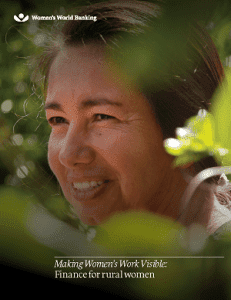
Women’s World Banking, in partnership with Federal Ministry for Economic Development and Cooperation (BMZ); Credit Suisse; Hivos; the Multilateral Investment Fund, member of the Inter-American Development Bank Group; and Irish Aid, began a project in 2011 to develop financial products for women in Latin America with the goal of reaching 24,000 new clients by the end of 2014. We partnered with three institutions that also see rural women as an opportunity in an untapped market segment: Interfisa Financiera (Paraguay), Caja Arequipa (Peru), and Fundación delamujer (Colombia). Today, at the end of the project period, we are pleased to report the results of the project: as of July 2014, more than 68,000 clients have accessed a new loan product, 46 percent of them women. Together the three institutions have dispersed more than US $22 million to women to sustain or grow their businesses.
Before we started the work, we knew that rural loans must be tailored to rural families. A financial institution can’t assume that just because they have a product that works for the urban setting, it will work for the rural market as well. Women’s World Banking has collected its experience and lessons learned into the report, “Making Women’s Work Visible: Finance for Rural Women.” We profile the research insights that drove product design and implementation with each institution and collect best practices that other institutions interested in serving the rural market can use in their work.
Women’s World Banking will use what it learned from these product introductions to help institutions in Asia and the Middle East/North Africa expand their offerings to rural women. Reaching more people through saving and insurance products and scaling these projects, expanding to include other regions or countries is one step toward closing the gap that is faced by more than a billion women globally.



